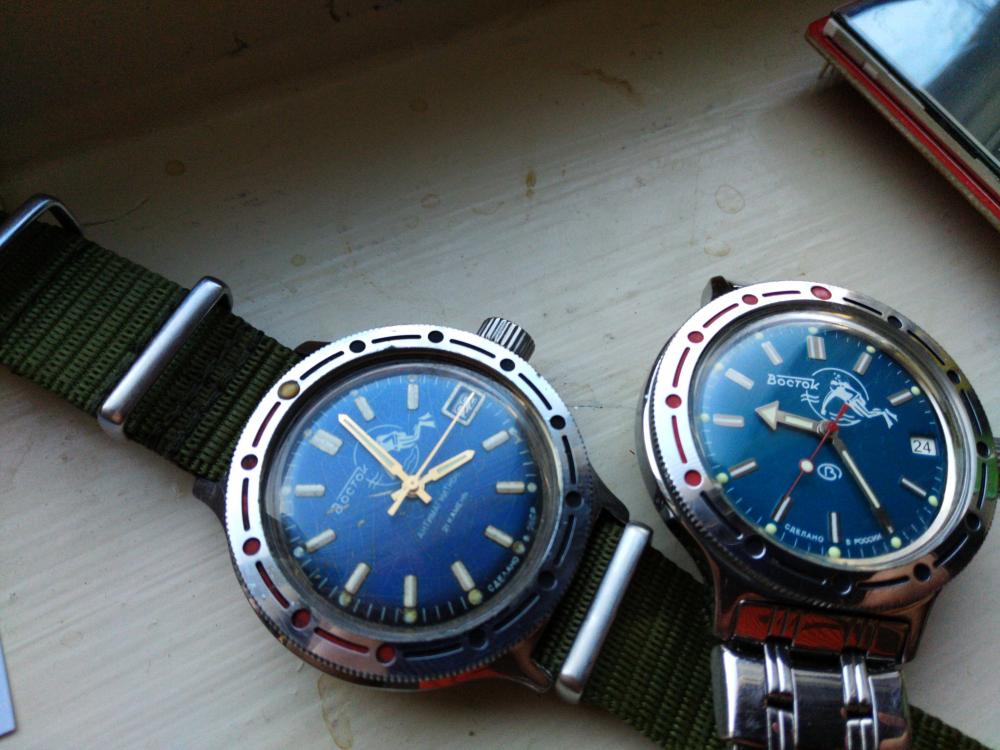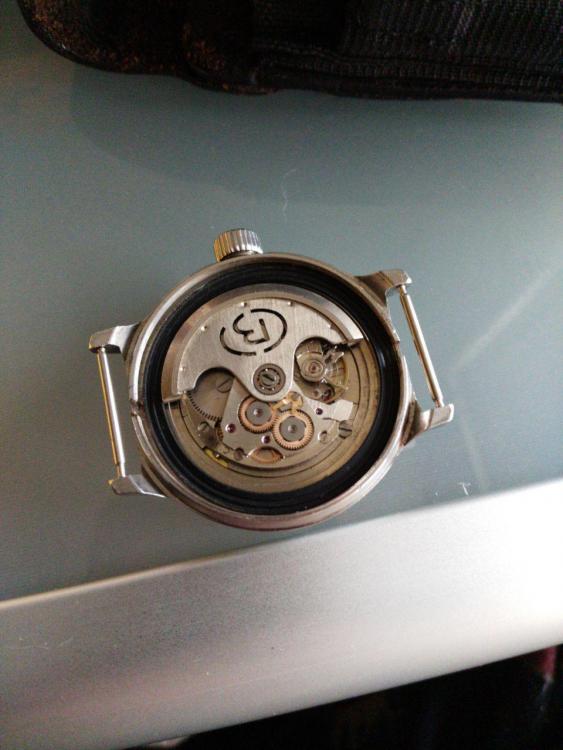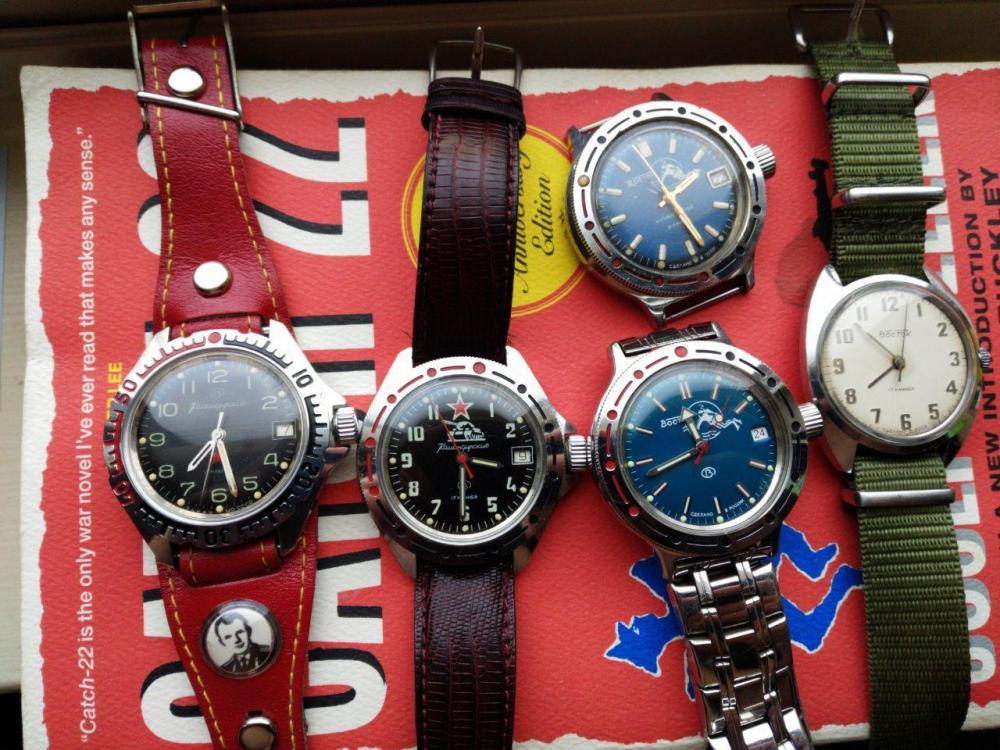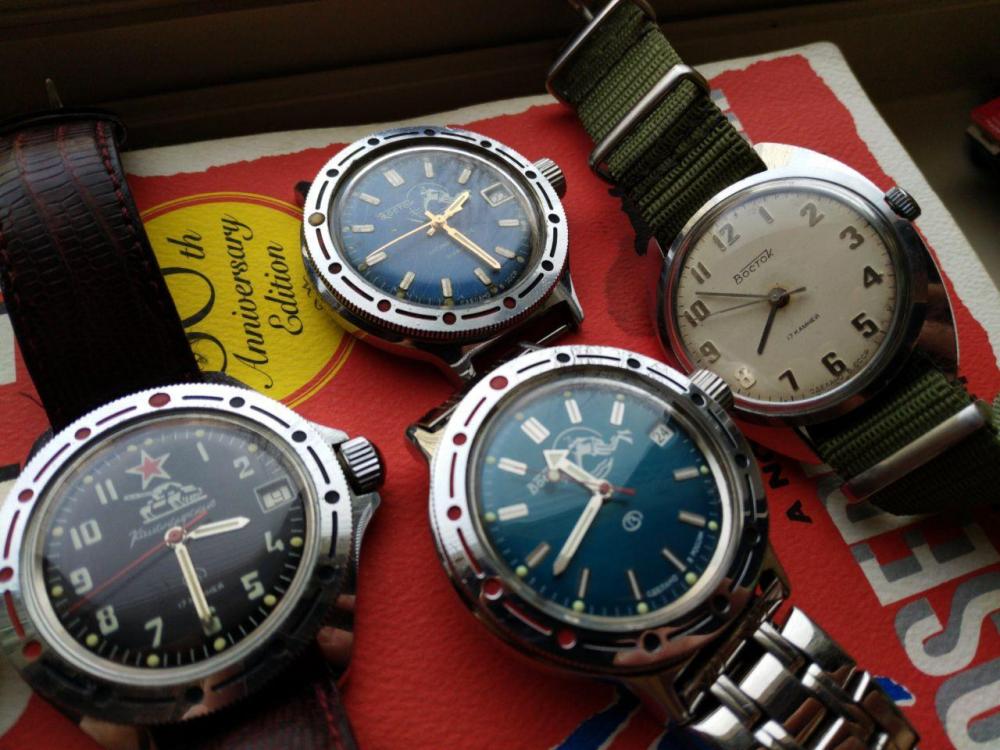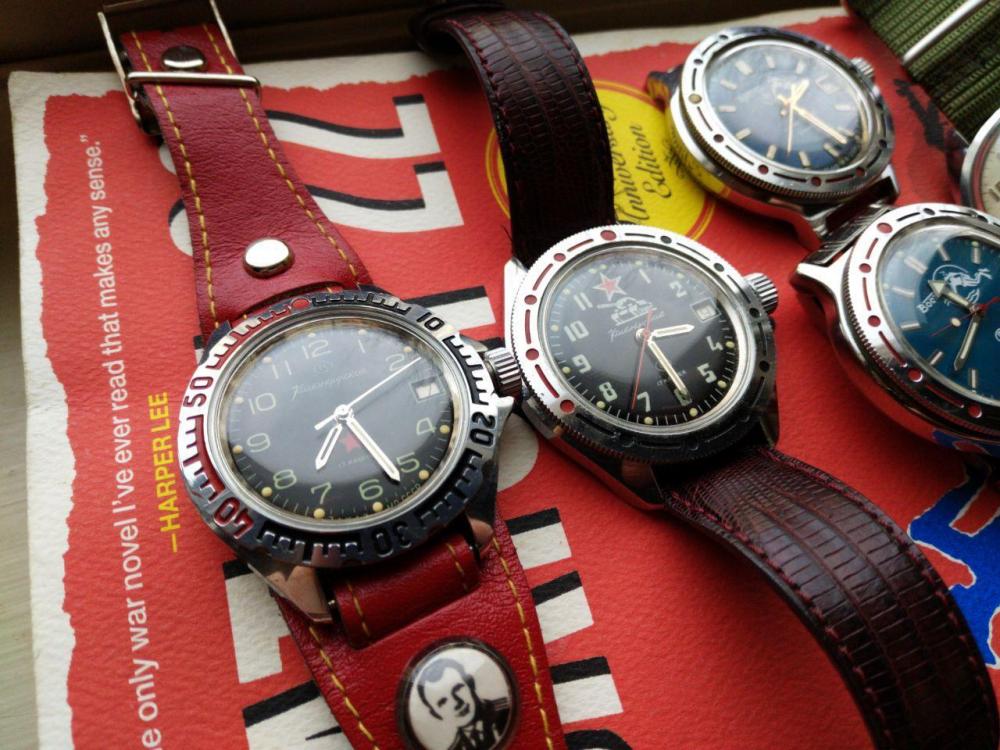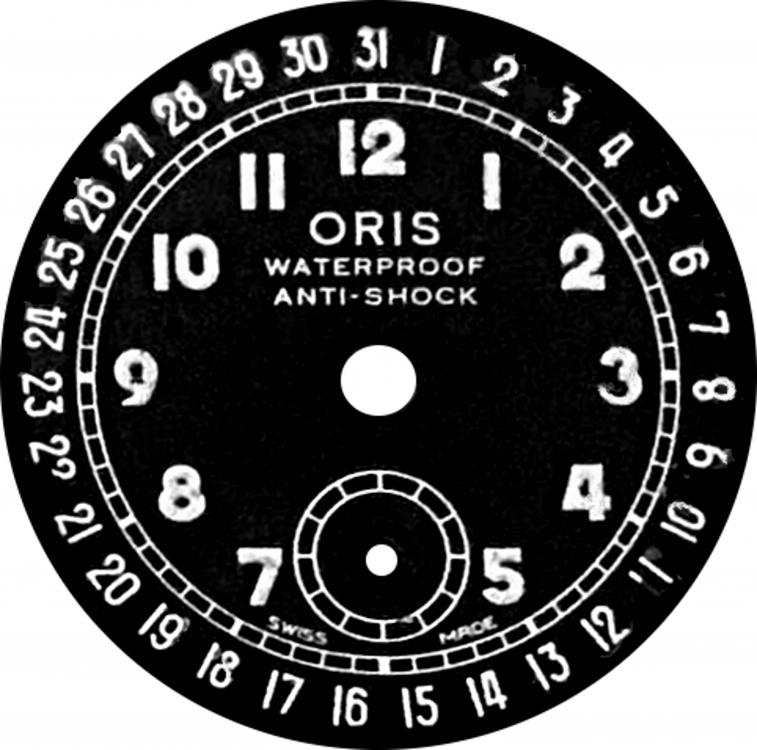Leaderboard
Popular Content
Showing content with the highest reputation on 02/16/19 in all areas
-
So I'm going to start this off with a story, which may just date myself, but so be it. Towards the end of highschool, into college, I was getting into mechanical watches. I had heard about Vostoks and their cheap, "good enough" attitude and design and loved them right away. My aunt has always had a touch and go relationship with my parents, some years they'd be best buds, others they'd be fighting. So it goes... This particular year, my aunt asks me what I want for christmas, so I ask for a Vostok Amphibia. Cheap watch, wont break the bank, but its something I'll use and cherish. Weeks go by and my Mom doesn't have faith in my aunt, asks what I asked for and I just visually describe the watch over breakfast. Christmas comes, my aunt pulled through and got me a new Russian made Amphibia, but whats this? My mom somehow found by a visual description almost the same watch, but soviet. Two Scuba Dudes about 30 years apart. I've enjoyed both these watches for the past 5 or 6 years. Now the big difference between these, or so I thought, was the new one was an auto, and the old one was a manual wind. The old one was considerably thinner than the new one, so I never second guessed it. About two months ago, I start getting into repair in order to replace the mainspring on the older one, as after a little bit of hand winding, it feels like it releases tension and continues winding. So I pop the back off and expect a standard 2414 movement, but instead I'm greeted to something else . I think what happened was the last person to open it up, over tightened the case and compressed the gasket, stopping the weight from swinging. Moving the gasket frees up the weight, but after years of sitting its quite sticky and I think it's going to get a well deserved cleaning after a few more practice movements. I guess an new gasket is also in order.3 points
-
This one is a real mystery so I thought I'd toss it up here in case someone else has come across this problem. I've reassembled the Speedmaster which was lacking parts (see my earlier inquiry) and have it up and running again. It's a long story, but amazingly, after missing a bundle of parts and being terribly neglected it's ticking away happily and the chronograph works a treat- but there is one BIG problem. The watch runs about two seconds per minute fast. That adds up pretty quickly. The timegrapher trace isn't too clean but it is consistent and it shows the watch running much better than that (note the image only shows about fifteen seconds of testing on the timegrapher- rest assured, I've had it on there a lot longer than that and have pretty much the same results in all positions) So why does the timegrapher show the watch running less than a minute off per day but the real world results are so much different? Well there are a few possible problem areas. The escapement may be the problem but the pallet and balance (complete) are NOS replacements from Omega. The escape wheel may be an issue- perhaps it's "slipping" and the pallet isn't locking consitantly. I haven't seen this on the timegrapher though nor have I seen it while watching the escapement under the microscope. Still, there are some obvious issues in the movement. Whoever disassembled it before I got it made a real mess of things. For example the Delrin wheel on the coupling clutch was vandalized terribly by a wayward screwdriver. It took quite a while to get the gear teeth back in order (the "before" picture is below). I secured a NOS replacement just in case the movement didn't accept the repaired coupling clutch. Despite this damage, I don't think the coupling clutch is the problem. The fourth wheel is positioned between the coupling clutch and the escape wheel. It's regulated by the escape wheel and the running seconds hand is attached to the fourth wheel. When I time how long it takes for the running seconds hand to make a full revolution using the stopwatch built into my iPhone, I come up with 58.02 seconds (give or take a few tenths). I'm thinking the problem lies with the fourth wheel. The Lemania 5012 chronograph movement (Tissot 2920) runs at a slower 21600 BPM. The replacement of the fourth wheel in this movement (a Lemania 5100, 28800 BPM derivative) with one manufactured for the 5012 movement would result in the watch running fast. It's questionable whether the gear teeth would mesh properly though. Right now it's just a guess. I may need to tear the movement back down to check the gear ratios for each of the wheels in the train to confirm they're the right wheels for the movement but before I do that I was hoping someone might have solved a mystery such as this before and have some good advice to offer! Thanks in advance for the comments as they are always helpful! Here's a few pics of the watch as it came together- just because posts with pictures are always more interesting. Before service begins... Why you should periodically replace your spring bars- Omega gaskets self destruct (turn into tar) if they aren't replaced for forty years... This movement is plastic fantastic but I love it. Other than not keeping time at all, it's the easiest chronograph movement I've worked on. Look at all those scratches- previous watchmaker's tool of choice- screwdriver or machete? It is a pretty beast though.1 point
-
1 point
-
Somewhere in the discussion group within the last year or so this came up with another watch. So the balance wheel oscillates at its proper frequency the timing machine shows that. The gear ratio has to correspond to the rate of the balance wheel as pointed out above. If the gear ratio is wrong the hands will move at the wrong rate. I've seen this occur with several watches they came in several different frequencies. So basically physically identical watches a lot of parts would interchange except gear train they be some differences there for the gear ratio and the different balance wheels. This met when you're ordering replacement gear train gears you had the make sure you ordered the correct wheels or you'd get exactly what you have strange timekeeping.1 point
-
I think it's a gear ratio issue. A friend had a similar problem on a rolex 1570. He bought a spare part (in his case second wheel) on the internet. But the seller mixed parts of 1570 and 1530 which are very similar but have different numbers of teeth. So the wrong wheel fitted but established a wrong ratio. I would count the teeth on the wheels you replaced and compare that with the originals.1 point
-
It's a nice watch. The almost certainly original case does show a bit of expected wear, as if a watch has been worn, but looks pretty solid. There does look like the front cover has been "sprung" a little. The slightly larger gap between the cover and the case band seem to indicate that. Still, overall it's very nice, IMHO. I believe the market is still pretty strong for early IWC watches. Good luck if you sell it. Cheers.1 point
-
It was not sticking out, however I was able to gently push the edge of the remain with a small 0.6 mm screwdriver just by the fraction of a mm at the time. Took about 20 mins but managed to get it out. What a relief. Thanks for the comment.1 point
-
Number 2 is a depthing tool plenty of descriptions of use on google and you tube, 3 are oil sink cutters, used when bushing a clock and a shallow round depression needs to be cut around the pivot hole to retain oil on the pivot. Can also be used on non jewelled watch plates when they are rebushed.1 point
-
Hi is this a travel clock as the spring looks a bit coarse for a watch If so as Tmuir says they an be repaired, I personaly have used both the rivit and the loose end fittings and done right are quite sucessful but it means softening the spring end either to bend it in the case of the loose end fitting and also the rivit method for drilling but care must be taken not to crack or craze the spring1 point
-
Will you post a pic of the other side? You may find the other end of screw sticking out so you could grip it. You are going to strip down the movement anyway. Use of penetrating oil always helps unscrew the broken piece, sometimes by a needle or screwdriver, not to mention special removal tools. Chemical disolution is the last resorts, you need to know the plates metal type or alloy to avoid it's distruction by alum. Regards1 point
-
You could in theory fix it, but I would measure the mainspring and see if you can buy a replacement. They used to rivet the extra bit on, but now its usually spot welded, but in some older watches they just have a loose end mainspring hook, which you might be able to do for this spring if you can't find a replacement, but it would be tricky. W.J. Gazeley's book Watch and clock making and repairing explains how to do this. (1950s book). I will take a photo and post it from the book shortly.1 point
-
If you remove every screw from the movement plate you can put it in alum . There is several threads about it on the forum.1 point
-
Well.....since I was so bullish on you getting the Star, I'm feeling bad its not yet working.....I'll make you a pulley if you like. One time offer, I am not going into pulley business lol. You have to supply a good dimensioned drawing of exactly what you want and postage.1 point
-
For a bit of fun, while the thunderstorms have me confined to the laptop I had a quick crack at tidying up that dial. A higher quality starting image image would be a help, but here is a quick and dirty conversion. Note, the file I am working on to produce these results is 150dpi and around 65Mb, and the version here is lower res. I don't think I can post 65Mb images here. Even if it were possible, some of the readers are looking at this on their phones, and wouldn't appreciate the 65Mb download. The SVG version is probably the more interesting of the two Certainly with the right starting image quality and some careful editing, you should be able to come up with a pretty usable result. Note: I'm not happy with the numerals yet, but I thought it worth posting as is, just so you can see the technique. OrisBlackSecondsAtSix1940s150dpi.svg OrisBlackSecondsAtSix1940s.ppm The idea behind using an SVG scale-able image rather than a raster based one, being the fact that you can mess with the size of it (within limits), without introducing too many weird raster based artifacts, and without having to fiddle with anti-aliasing.1 point
-
Dear Bethan, I am not sure, if this is what you have in mind, but might help: Part 1: Part 2: I hope putting the links to youtube does not offend the forum rules. Cheers Thorsten1 point

